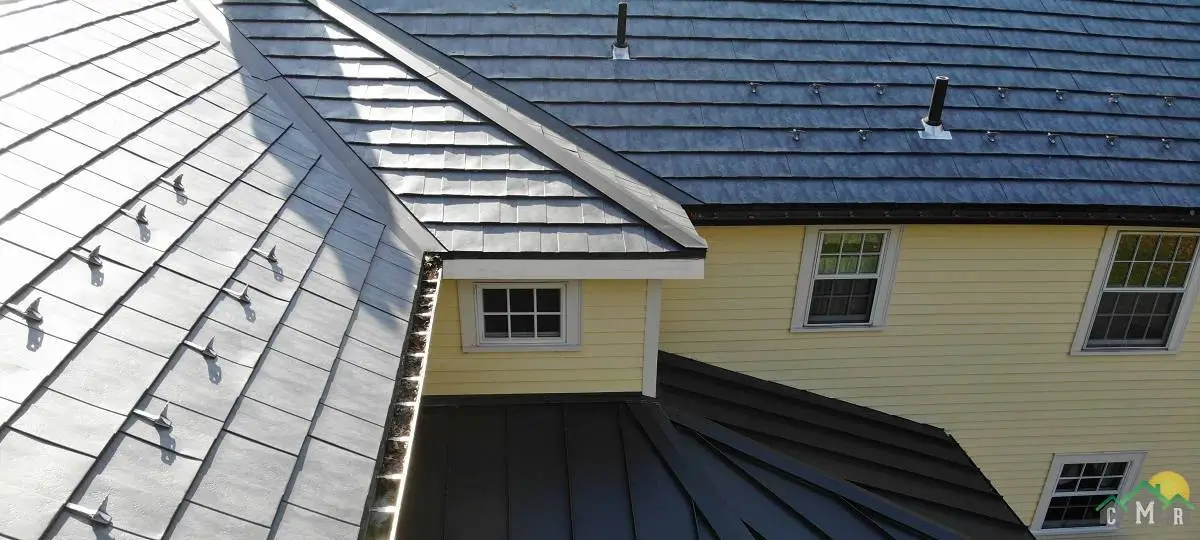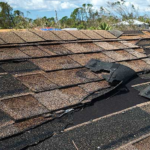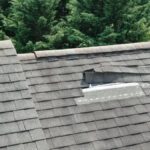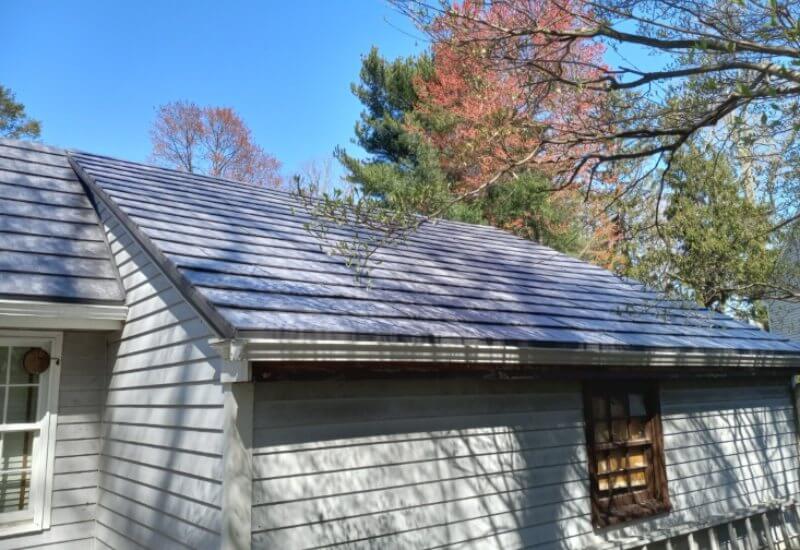How Much Overhang on Metal Roof
November 16, 2024 | By Mike Gonet | Filed under: Blog

When deciding on the overhang for a metal roof, it’s essential to tailor the length based on local weather patterns and desired protection. Factors such as roof pitch and climate play a vital role in achieving the right balance between functionality and design. For heavy rainfall areas, a longer overhang is practical, while shorter overhangs are better for high-wind zones. Proper installation of fascia boards, soffits, and drip edges is critical for ensuring optimal performance. A well-designed overhang enhances weather protection, improves energy efficiency, and adds to the overall curb appeal of your roof. Working with a trusted metal roof repair company in Rhode Island can help you achieve the ideal overhang for your home.
Importance of Overhang
The overhang of a metal roof plays a crucial role in shielding a building’s exterior walls from water damage caused by runoff. By extending the roof past the walls, the overhang prevents water from dripping down the sides, reducing the risk of moisture penetration and structural deterioration. It also protects windows, doors, and siding from excessive exposure to rain, snow, and sunlight, extending their lifespan and lowering maintenance costs.
The overhang enhances the building’s aesthetic appeal, adding a polished finish to the roofline and contributing to its architectural design. From a functional perspective, it helps protect the building’s foundation by channeling water away, minimizing erosion, and promoting the structure’s longevity. A properly designed overhang effectively balances practicality and visual appeal.
Recommended Overhang Length
Determining the recommended overhang length depends on factors such as climate, roof pitch, and the desired level of protection for the building’s exterior. Longer overhangs are advisable to protect walls and foundations in regions prone to heavy rain or snow. Conversely, steep roof pitches may require shorter overhangs to avoid wind uplift and structural issues.
A more substantial overhang can provide shade in areas with intense sunlight, reducing heat gain and enhancing energy efficiency. The overhang length also affects the structure’s overall appearance, contributing to its architectural style. Consulting with a roofing expert ensures the overhang meets both practical needs and design goals.
Factors Affecting Overhang
Several factors influence the appropriate overhang length for a metal roof:
- Location: Geographic location impacts overhang length. Areas with frequent rainfall may require a longer overhang for better water management, while regions with strong winds benefit from shorter overhangs to reduce uplift risks.
- Roof Pitch: The roof’s slope determines how water is shed. Steeper roofs may allow for shorter overhangs, while flatter pitches often need longer ones for adequate runoff protection.
- Protection Needs: The overhang’s purpose influences its size. Deeper overhangs provide more shade and protection against elements, while shorter ones maintain a minimalist aesthetic.
Overhang Installation Process
Properly installing a metal roof overhang requires careful alignment and secure attachment of components for durability and strength. The process typically involves:
- Fascia Boards: These boards are attached to the ends of rafters or trusses to support the roof edge and create a clean finish.
- Soffits: Installed under the overhang, soffits improve ventilation and protect rafters from moisture damage.
- Drip Edges: These are affixed along the roof edge to divert water away from the building’s structure.
Accurate measurements and alignment are critical during installation. All components must be securely fastened using appropriate hardware, such as metal roofing screws, to prevent wind uplift and water infiltration. Sealing joints with high-quality caulk further enhances weather resistance. Following these steps ensures a sturdy and visually appealing overhang.
Benefits of Proper Overhang
A well-installed metal roof overhang offers multiple advantages for the overall roofing system:
- Weather Protection: It shields the structure from rain, snow, and UV rays, preventing leaks and minimizing water damage risks.
- Energy Efficiency: Overhangs provide shade, reducing heat absorption through walls and windows. This decreases cooling needs and lowers energy costs.
- Enhanced Curb Appeal: Beyond functionality, a well-designed overhang adds dimension and depth to the roofline, boosting the building’s overall aesthetic.
Other related posts:





